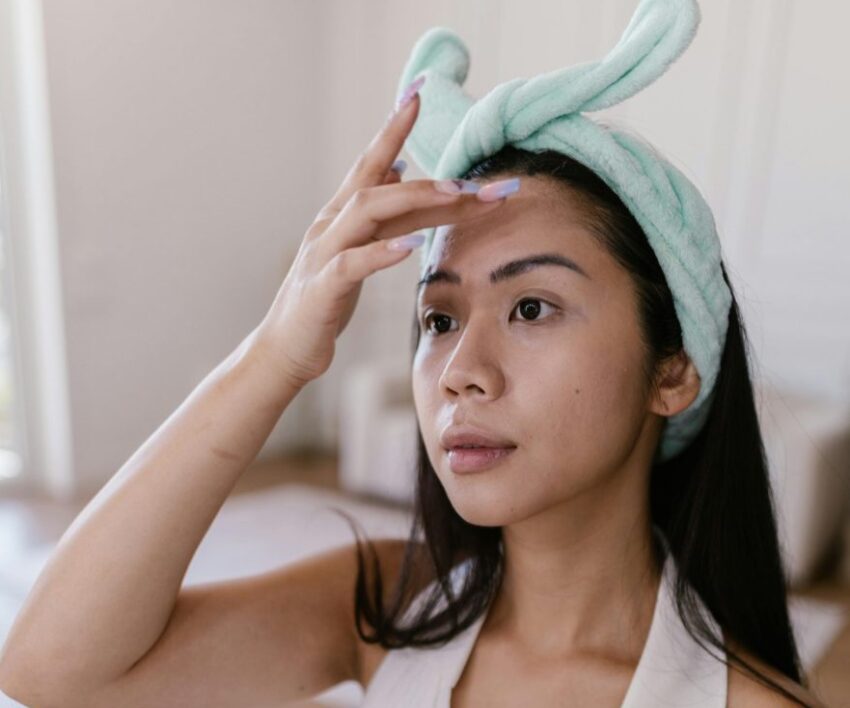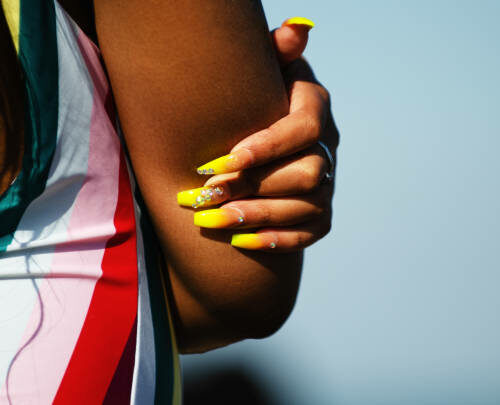
No matter how down pat we’ve got our skincare routine, chances are that one morning we’ll wake up with a giant, painful blind pimple somewhere on our face. And it’ll probably be on an important day when you need to look your absolute best.
So, what causes blind pimples, and how can we get rid of them and prevent them from ruining our day?

What are blind pimples?
The first step in solving any problem is understanding it. In the case of blind pimples, you need to know that they’re not like regular whiteheads or blackheads. They lurk beneath the surface of the skin, with no head, and often turn into irritated, red, and extremely painful bumps.
They typically pop up thanks to clogged pores full of:
Excess oil (sebum): Our skin naturally produces sebum to keep it moisturized. But sometimes, our bodies go into overdrive, and this oil gets trapped.
Dead skin cells: If these cells don’t shed properly, they can team up with sebum and create a blockage.
Bacteria: This unwelcome party guest thrives in clogged pores, leading to inflammation and that signature blind pimple pain.
Several other factors can trigger these stubborn breakouts, which could very well be the reason that blind pimples pop up unexpectedly. These include:
Hormonal fluctuations: Our hormones love to play havoc with our skin, especially during menstruation, pregnancy, and puberty. These fluctuations can increase sebum production, paving the way for blind pimples.
Diet: Sugar and processed foods can worsen acne, including blind pimples. Moderation is key.
Stress: Feeling overwhelmed? It might show up on your skin. Stress hormones can contribute to breakouts and blind pimples. That’s why pimples always seem to show up on the day of an important event, like a job interview or first date.
Your skincare routine: Harsh scrubs, comedogenic (pore-clogging) products, and even over-washing can irritate the skin and trigger blind pimples.
The different kinds of blind pimples
Before we tackle our blind pimples, we need to know the kind of pimple that has surfaced under your skin.
Cysts: These are the deepest and most painful blind pimples. They form deep within the skin and can be large and tender.
Nodules: Like cysts, nodules are solid, inflamed bumps, but they don’t usually contain pus.
How to manage them
Unfortunately, you can’t get rid of a blind pimple overnight. Most of the time, it can take up to a full week before the pimple begins disappearing. The best way to deal with blind pimples is to manage them and employ some preventative techniques.
If you’re currently battling a blind pimple, try a warm compress for about 15 minutes a few times a day. This helps reduce inflammation and can help bring the pimple to a head. However, if your blind pimple is particularly swollen, painful, and not coming to a head, do cold presses instead.
Or you can try some spot treatments using over-the-counter skincare products that benzoyl peroxide or salicylic acid. These ingredients target inflammation and promote cell turnover. You can also use pimple patches, which help bring the pimple to a head and stop you from picking at it.

To prevent blind pimples, use gentle skincare products that you can use twice a day. If you struggle with persistent blind pimples, try avoiding harsh scrubs and opt for oil-free, non-comedogenic products.
Alternatively, you may need to head to a dermatologist if you find that nothing is working.
Should I pop a blind pimple?
Absolutely not! Popping a blind pimple is a recipe for disaster. For one, squeezing a blind pimple can push bacteria deeper into the skin, worsening inflammation and potentially leading to scarring. And, if you have any dirt on your fingers when you pop the pimple, it can lead to an infection.
How long should blind pimples last?
Unfortunately, there’s no one-size-fits-all answer. Blind pimples can last anywhere from a few days to several weeks, depending on their severity. With proper care, most blind pimples will resolve on their own. However, if a blind pimple is particularly large, painful, or persistent, it’s best to consult a dermatologist for treatment options.
Compiled by Jade McGee
Also see: 5 Interesting skin benefits of LED light therapy




